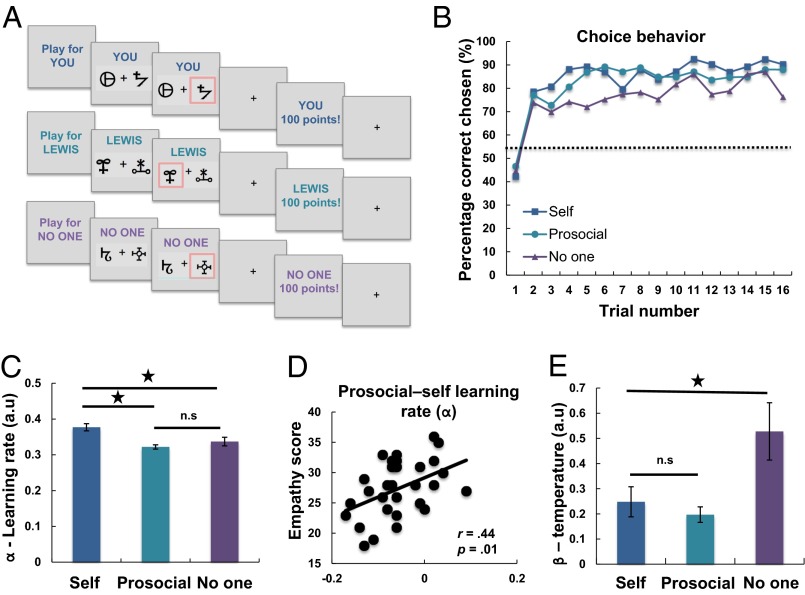Fig. 1.
Behavioral task and data. (A) Participants performed a reinforcement learning task in which they had to learn the probability that abstract symbols were rewarded. At the beginning of each block, participants were told whom they were playing for, either themselves, for the other participant, or in a condition where no one received the outcome. (B) Group-level learning curves showing choice behavior in the three learning conditions. Trials are averaged over the three blocks (48 trials total per condition, 16 trials per block) for the self, prosocial, and no one conditions. Dotted line shows chance level. (C) Comparison of learning rates (α) from the computational model. Participants had a significantly higher learning rate when learning in the self compared with the prosocial and no one conditions. (D) Individual differences in empathy (online simulation) modulated the prosocial vs. self learning rate difference, with those higher in empathy having a more similar learning rate between the prosocial and self conditions. (E) Participants were less consistent (higher β) when choosing for no one compared with choosing in the self and prosocial conditions. Asterisks represent significant differences (P < 0.05).

